- Home
- Drawing Papers
- Stretching watercolour paper
Stretching watercolour paper
Is stretching watercolour paper necessary when using watercolour pencils? It depends.
If you only use the pencils dry, you don't need to stretch the paper. However, if you plan to add water later, go ahead and pre-stretch the paper.
When you apply water to the paper, it expands and then contracts as it dries, potentially causing the surface to buckle.
For small areas with minimal water, you may not notice this, but if you use extensive water without stretching, you can ruin your artwork due to uneven drying and warping.
How wet should you make the paper when stretching it?
When stretching watercolour paper, wet it enough so it relaxes and spreads out before you fix it to a board.
As the paper dries and contracts, it will tighten and remain flat, making painting and framing easier. Even after you apply water-based media, the paper should stay flat due to the initial tension from stretching.
The paper's weight determines how much water to apply.
If you immerse paper in water for a long period, you risk bending the board as it dries.
Instead, dampen both sides with a sponge or brush, allow the paper to rest, then attach it to the board to ensure even tension.
 This thin board bowed as it dried as shown by the gap between it and the piece of wood
This thin board bowed as it dried as shown by the gap between it and the piece of woodHow to attach the paper to the board
To securely hold paper onto a board, use brown paper tape from art stores. The tape has a matte brown top and a shiny, adhesive underside when dry.
Choose a board larger than your sheet of paper. Centre your paper on the board and apply soaked tape half on the paper edges and half on the board. Smooth out from each side's centre and let it dry completely.
This method works well for smaller drawings, but larger artworks might require different techniques.
Keba Artmate Paper Stretcher
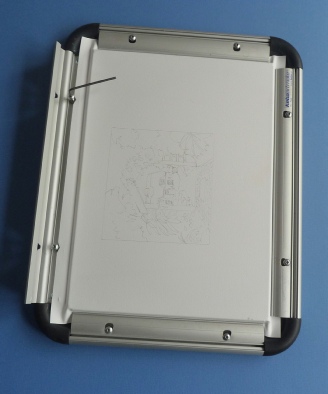
Lately, Peter has been using a commercially made aluminum-framed board that firmly holds the wet paper down at the edges. This has given him much more reliable results.
Although pricey, the Keba Artmate's secure clamping and sturdy construction, enable easier stretching and more consistent results compared to DIY methods. It can be a worthwhile investment for frequent painters.
Keba offers the Artmate in various sizes, which you can mix and match to create square or letterbox-shaped options. It is particularly useful for quick setups like shows or demonstrations.
The Artmate holds the paper firmly in aluminum clamps on each side of the white, plastic-surfaced board.
Once the paper has been stretched and dried on the board, it can be removed dry and replaced later if needed.
Heavyweight paper will take up the shape of the board surface, as seen on the left side of the photo, and will therefore require trimming.
The fastening bolts have an inset for an Allen key. Keba has built the whole unit very and the price reflects its quality.
Alternatives to the Artmate
Other commercial devices for stretching watercolour paper are available through art materials suppliers.
Jacksons offer a paper stretcher of a simple design which looks very promising and costs less than half the Artmate's price. It has four plastic clips which hold the paper to the foam backing board - one along each side.
The system works well and stretches the paper securely. I have tested it on 300 gsm Fabriano and it holds it firmly. Educational Art & Craft Supplies make the boards.
For those who like to get their paper wet and stretch several sheets at a time, the price isn't too dear and the result more reliable than using boards and sticky tape.
The only snag I can report is that the plastic clips that surround the board stand proud of the paper surface and this can be uncomfortable if you like to rest your hand along the paper edge.
Using a larger sheet of paper and the larger board would possibly ensure a sufficiently wide margin around the picture edge to enable comfortable working.
Avoid the following options as they are NOT ideal:
Using drawing pins to hold down the paper
- Pins are spaced apart, so they don't give you full control over the paper
- Tension from the paper pulling against the pinned spots can cause tearing at those weak points
Using double-sided tape
- Double-sided tape makes it hard to remove the paper later
- You risk damaging the drawing surface when trying to take it off the board
When only dampening certain areas
If you only wet minor areas, consider using masking tape to hold the paper on a board. This simple method prevents major buckling during drying and allows for easy removal afterward.
The one inch wide tape works well, but is a bit fiddly to apply. The 1.5 inch tape might be easier to handle if you can get it. I have used the 1 inch variety below.
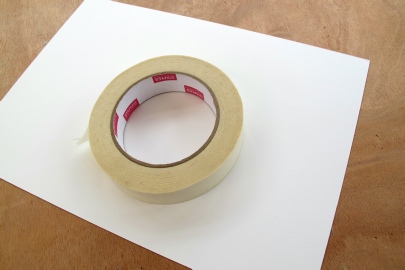
Using tape for stretching watercolour paper
Place your sheet of watercolour paper, working surface down, on the board.
First tear off a strip of tape the same length as one of the sides and affix the long edge ONLY to a line just in from the edge of the back of the paper.
Roll the sticky tape over and back down to form a tube of tape with one side down on the paper and the other sticky side face up towards you.
This is easier demonstrated than explained, but try it out and you should soon get the idea.
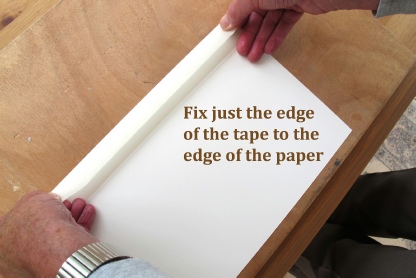
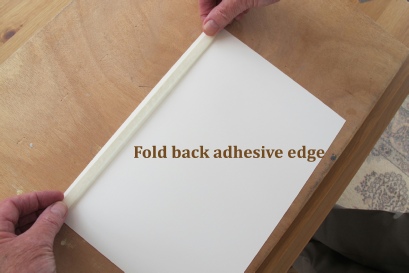
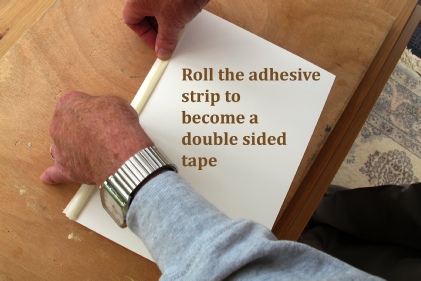
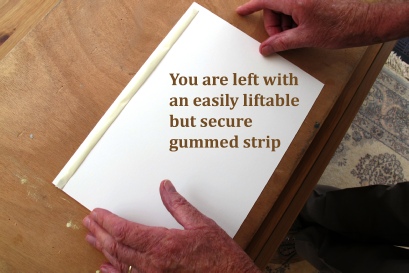
Complete the four sides of adhesive so that the paper now has four sides that will stick down to the board.
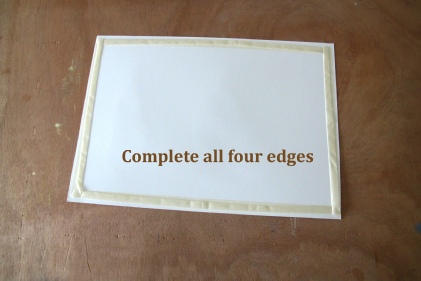
You will find that if you use a 300 gsm (140lb) paper, and moderate amounts of water when you paint your undercoat, the expanding paper surface that bulges out when you paint, will settle back down to complete flatness once it dries.
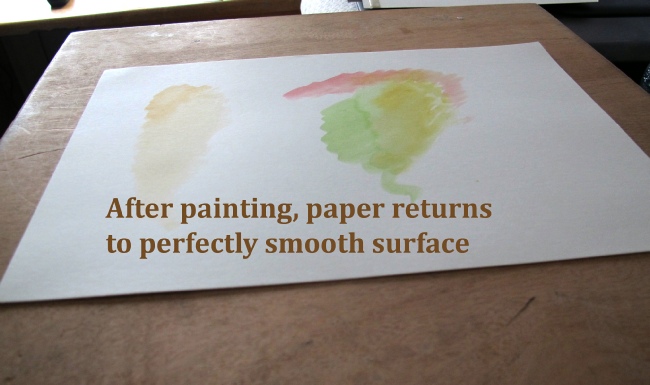
Masking tape is designed to be lifted, but the four long strips you have added to the back of your drawing paper will resist sideways movement of the paper whilst still being removable by gently lifting afterwards.
Just make sure that you keep your painted picture to the area away from the tape - if you have a problem you may need to trim the paper afterwards.
At least you will not have to trim as much as you would have done when stretching watercolour paper the traditional way.
There are no guarantees, as I have no control over your paper, board, tape or the amount of water you will use, but I find it has worked for me, and it worked for the person who showed me the method.
Ready to give it a go?
It's time to take action and stretch that watercolour paper like a pro! You've got all the knowledge you need right at your fingertips.
Don't let fear or doubt hold you back - stretching paper is a straightforward process that even beginners can master. With just a few simple supplies and the techniques outlined, you're equipped to prevent buckling and warping for good.
The initial effort is minimal, but the payoff is huge.
Imagine the satisfaction of creating flat, pristine watercolour artworks without any unsightly distortions.
Your paintings will have a refined, professional look that makes the extra step worthwhile. And who knows? Proper paper stretching could be the secret to opening the door to your full potential as a watercolour pencil artist!


